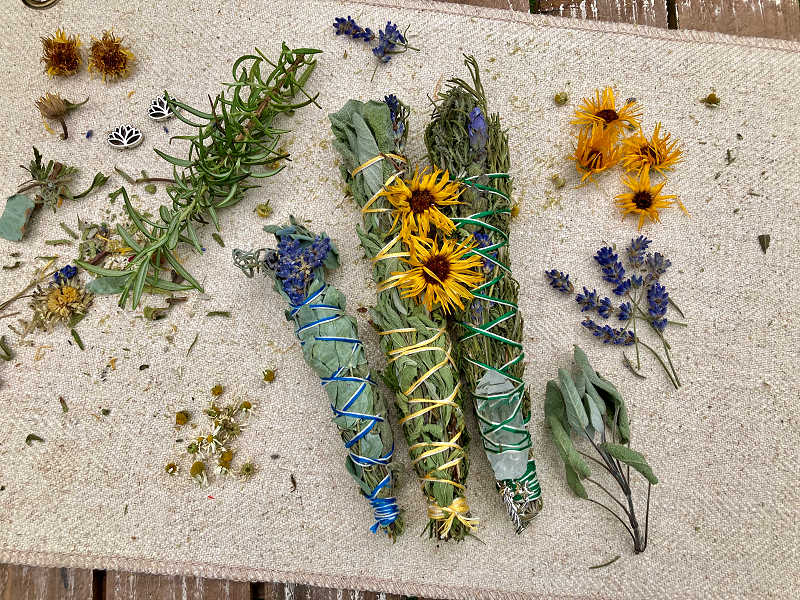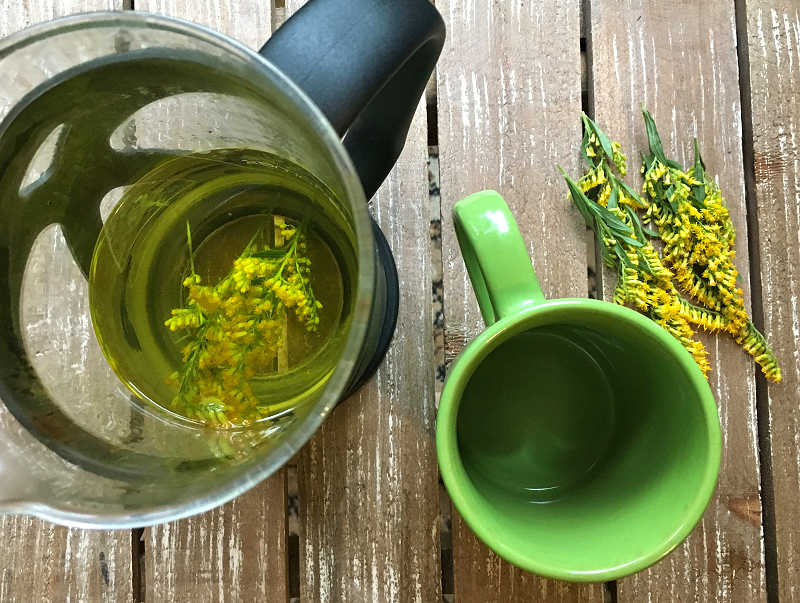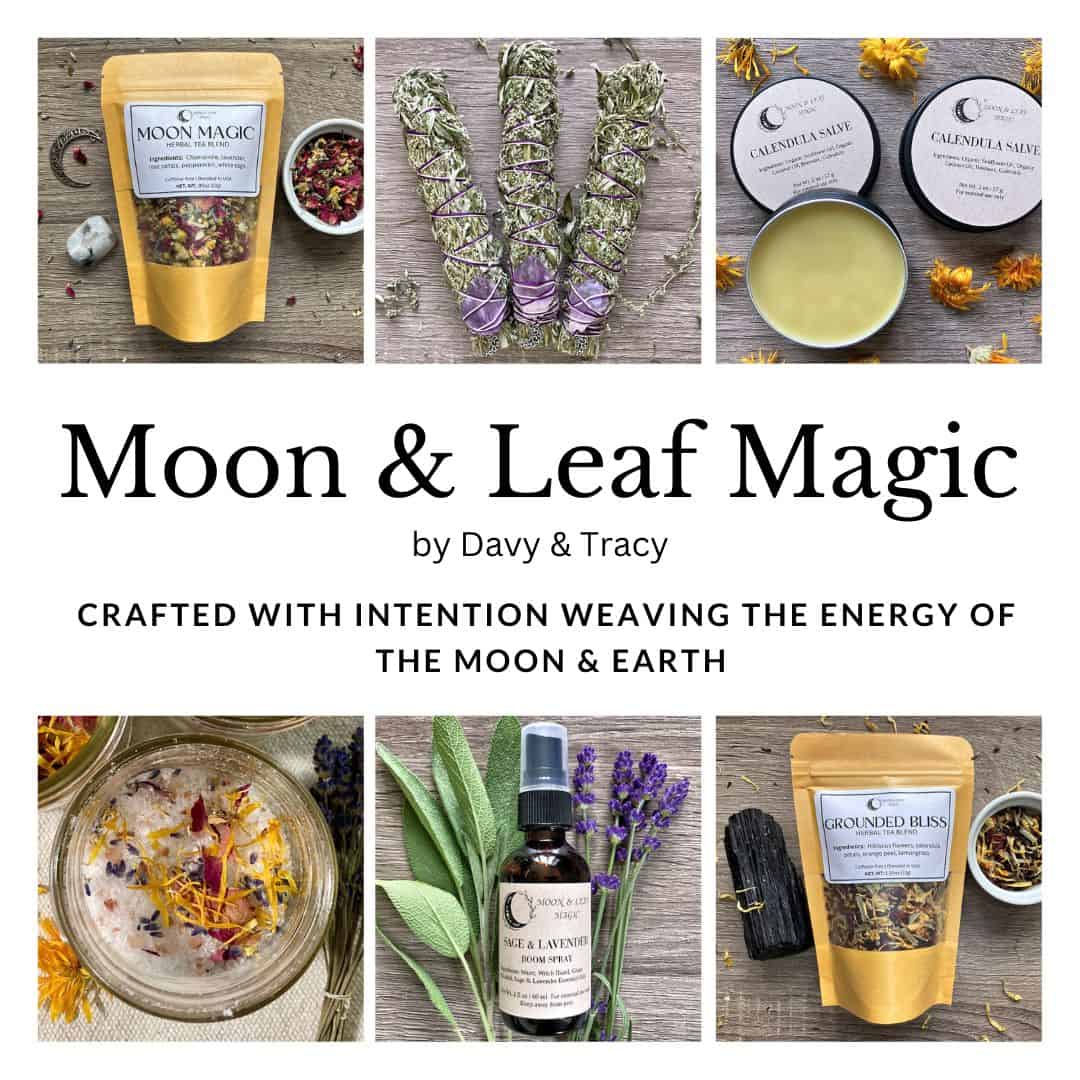
Date: August 1 (Traditional) / August 7 (Astrological date, when Sun is 15° Leo.)
The summer stretches on and the heat of the sun is felt at its most intense.
Despite this, the days grow perceptibly shorter as goldenrod dazzles the fields and forest edges.
By now, the vegetable gardens and farmer’s markets are bursting with produce.
The Wheel turns and we arrive at Lughnasadh (pronounced: Loo-nah-sah), also known as Lammas.
Traditionally celebrated on August 1, Lughnasadh is the mid-point between Litha (The Summer Solstice) and Mabon (The Autumn Equinox).
This holiday is associated with the first harvest, and we reflect on themes like preparation, gratitude, abundance, and crafting.
Themes & Meanings For Lughnasadh
Lughnasadh represents the first harvest, and has traditionally been associated with the wheat harvest and baking of bread.
The themes that Tracy and I reflect on during Lughnasadh are:
First Harvest
A major theme of Lughnasadh is first harvest, or enjoying the “first fruits”.
If you have an herb or vegetable garden, give it a simple gratitude blessing and thank it for the abundance that it has given you this season.
The first harvest doesn’t need to have a literal interpretation, though. You can take this time of the year to reflect on what you can “harvest” in your life.
Reflect on the skills, knowledge, and habits that have rewarded you so far this year. What new year or new moon intentions have come to fruition – or are well on their way?
Take a moment to reflect on the blessings in your life right now. Give thanks for blessing that are on their way to you.
Lughnasadh is a reminder to enjoy the reward of your efforts, and to balance work with pleasure.
Gratitude
Lughnasadh is a harvest festival, and because of that, gratitude is a major theme of this time of year.
This is the point of the year when the Earth is most abundant. Take a cue from nature and check in with your own sense of abundance.
This is a great time of year to challenge narratives and mindset issues around money, abundance, and prosperity.
Start with gratitude, and reframe what abundance means to you. What are you abundant in right now? (There’s more to abundance than just money.)
Crafting & Sharing
Raw materials for herb crafting reach their peak right now as I am inundated with smoke cleansing herbs, tea herbs, grape vines, seeds, flowers – everything that I use in my green witchy practice is ready to be harvested, or already drying on racks. I’m just a couple weeks from harvesting mugwort.
For me, Lughnasadh is a time to let my inner-child out to create and play.
Make space for creativity during the waning summer days. Whether you paint, sculpt, create music, write, take pictures, herbcraft, or practice some delicious kitchen witchery, give your creative side some room to play this time of year!

Clearing Space
Each holiday on the eight-spoke Wheel of the Year corresponds to one of the eight major moon phases. Since Lughnasadh corresponds to the waning gibbous moon, letting go and clearing space is also a theme.
Now is a great time for end of summer cleaning. Donate gently used items to consignment shops. Declutter. Release obligations. Make space for what you wish to harvest in your life right now!
Correspondences & Setting Up A Lughnasadh Altar
One of the simplest ways to celebrate Lughnasadh, is to create a simple altar that features meaningful elements of the season.
Moon Phase: Lughnasadh corresponds to the Waning Gibbous Moon, a time of releasing and clearing space.
Colors: My favorite candle colors to use at Lughnasadh include gold, bronze, light brown, green, red, orange, and yellow.
Crystals & Stones: Any stone associated with prosperity and abundance are perfect to wear or set on an altar for Lughnasadh.
I especially like working with citrine, pyrite, green aventurine, and carnelian.
Herbs: Sage, dill, and fennel are my favorite Lughnasadh herbs, and I like to incorporate them into recipes and baking at this time.
Yarrow and calendula are also associated with the season.
Chamomile is a great way to relax during this time of year.
Make goldenrod tea as a ritual beverage to reflect on the abundance you have now, and the blessings on their way.

Flowers: Goldenrod, helenium, rudbeckia, yarrow, echinacea, sunflower, and summer chrysanthemum.
Scents (Incense/Essential Oils): Frankincense, copal, rosemary, chamomile, and sandalwood.
Foods: Bread is a symbol of Lughnasadh, and can be enjoyed in its many forms.
Summer produce like corn, zucchini, yellow squash, fresh tomatoes, bell peppers, and anything else that is in season at this time is perfect for a Lughnasadh feast.
Altar Decor: Wheat, grains, corn, bread, harvest symbols, cornucopia, berries, and nuts. Create corn dollies or human figures out of corn husks, wheat/grass stalks, or any vegetative material from your garden or yard.
Suggested Rituals
Here are some simple, quick ideas to help you connect to the mid-point between summer and autumn.
1) Bake Bread
Bread is a symbol of Lughnasadh, and as is typical of most pagan festivities, the baking and sharing of bread is often encouraged.
If you can, bake a simple loaf of bread and incorporate any fresh herbs from your garden. If you happen to have ripened sunflower seeds, use those. Or make a delicious zucchini bread from home-grown (or farmer’s market-acquired) produce.
And yes, making a simple batch of corn muffins or corn bread from a box of Jiffy mix is just fine, too! =)
2) Climb A Hill
One of the traditions of Lughnasadh that has survived from ancient times is to make a pilgrimage to the top of a hill. It is believed that gatherings were held on a hilltop to honor the Celtic god Lugh, from which the festival gets its name.
If you are able, an uphill gratitude walk is a fantastic way to honor the obstacles, struggles, and upward momentum you’ve persevered through over the past year. With each step, be grateful for the strength, wisdom, and opportunities that each one presented.
When you reach the top, look around and take in the view. Give thanks for what you’ve achieved or manifested so far.

3) Visit A Farmers Market
Nothing gets me into a grateful, “count my blessings” mood than visiting a local farmer’s market and seeing just how abundant the land around me truly is.
Regularly visiting farmers markets is also an excellent way to keep up with what foods are in season, and to connect to the land around you – even if you don’t have a backyard garden.
Make a point to try a new fruit or vegetable. Support a local farmer or artesian! It’s a simple way to give back to your community and the land.
4) Gratitude Meal
As a harvest festival, Lughnasadh is associated with gratitude.
Invite some close friends or family over for a meal of locally-sourced foods, or in-season ingredients.
Make gratitude the theme of your meal.
5) Set Intentions For the Autumn Season
While it’s still the middle of summer, begin to turn your thoughts to what you want to “harvest” in your life this fall.
What needs just a little more attention and nurturing?
What’s ready to harvest now?
What preparations must be made in the next six weeks to ensure you are set up for the coming autumn and winter months?

